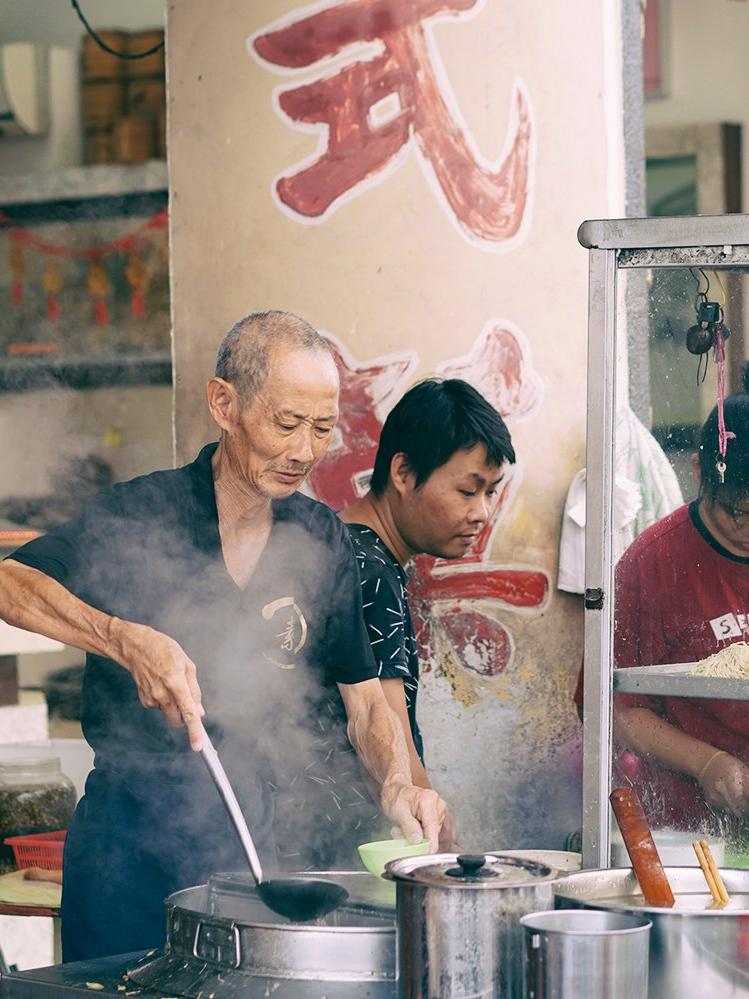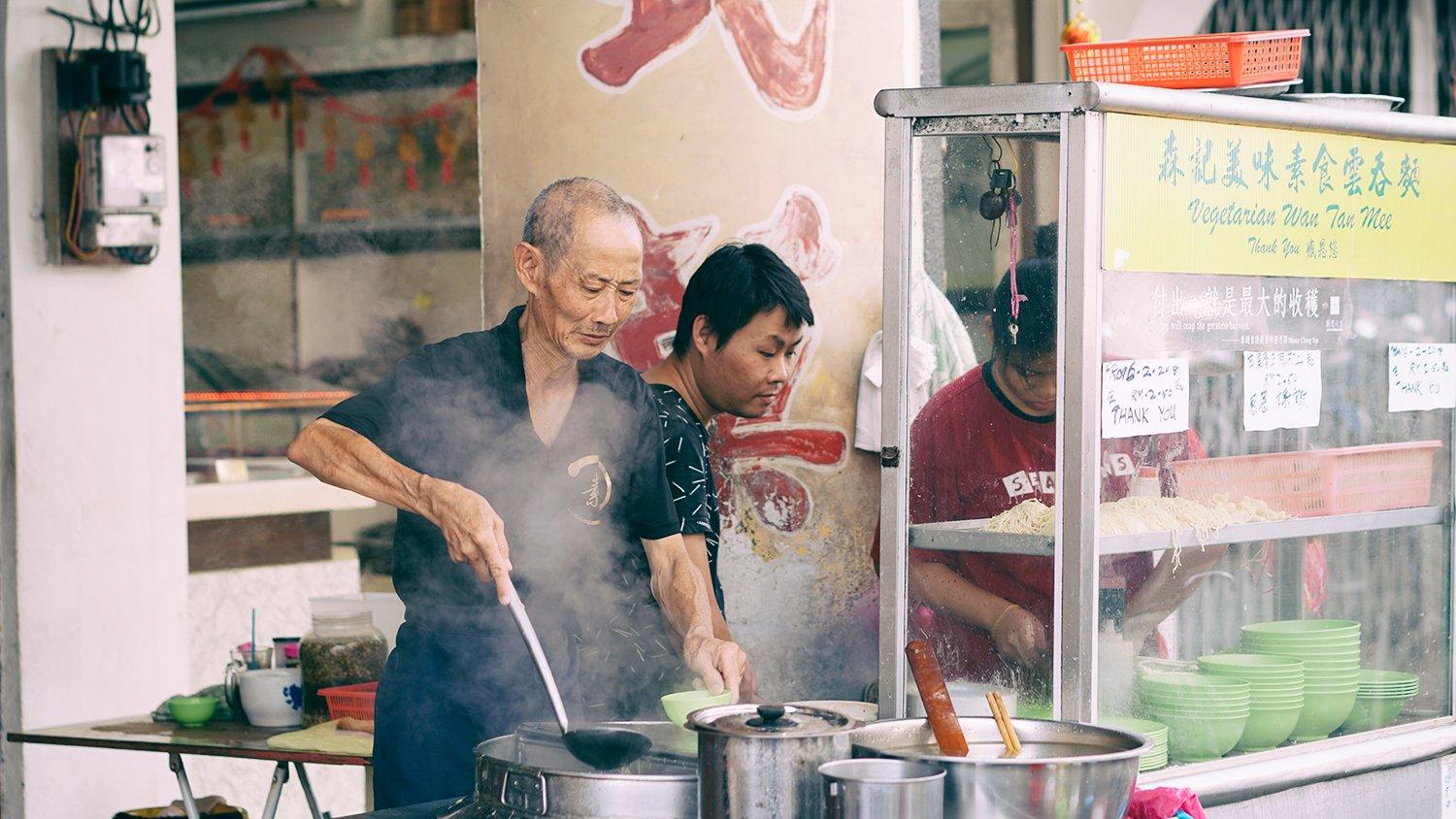Food and community
Coincidentally, while brainstorming ideas for this article, I was introduced to the book “The Story of Hoi An Rice” by Nir Avieli. This is an in-depth study of the role of cuisine in social life in Hoi An, a famous town in Central Vietnam. The author uses ethnographic methods to explore how cuisine not only reflects but also shapes social relationships, gender roles, religion and cultural identity.
Avieli emphasizes that Hoi An cuisine is not just food but also a cultural symbol, bearing the mark of history and cultural exchange from China, Japan and France. The author also mentions the important role of women in preparing and maintaining traditional values through cuisine, analyzes how family meals reflect social structures and family relationships, delves into parties and festivals, from weddings to religious ceremonies, to illustrate how cuisine connects communities and expresses collective identity and discusses how tourism and globalization are influencing Hoi An cuisine, from changing ingredients to preparation and serving methods.

Cuisine not only reflects but also shapes social relationships, gender roles, religion and cultural identity.
In the opening chapter, he wrote: “Breakfast in the small riverside town of Hoi An has never been a simple matter, as the choices and variety seem to overwhelm you…” This sentence reminds me of the dilemma around 2009 when I was living in Singapore, every morning when I stepped out onto the street I missed the breakfast shops in Vietnam. While breakfast dishes in Vietnam are so diverse, shops open very early, in Singapore, shops usually open after 8am and when thinking about breakfast, the first and only image that comes to mind is crispy, fatty kaya toast served with soft boiled eggs and coffee (kopi) or tea (teh). That was the first time in my life I lived in a foreign country, the first time I realized that cuisine is a mirror of a culture.

Since then, I have been interested in books or articles on the topic of food and whenever I go anywhere, I often spend time visiting local markets and enjoying dishes prepared by local people. For example, following the passages in the essay “Other Colors” by Turkish writer Orhan Pamuk, I was fascinated by the street vendors on the streets of Istanbul and the atmosphere surrounding the fast food stalls. Because he wrote that in Istanbul, people eat fast food to escape from the Islamic tradition of associating food with the idea of grandmothers, mothers, the sacred, to seek novelty, to breathe in modern life.
I feel like I can naturally blend into the atmosphere of this city connecting Asia and Europe when lining up to buy a kebab sandwich, a glass of orange and pomegranate juice, an ice cream. Or when I come to Hue and hold in my hand the book "Returning to Hue for Rice" by author Phi Tan, I not only enjoy famous Hue dishes such as beef noodle soup, water fern, am phu rice, mussel rice... but also look for rustic dishes in Hue family meals such as termite mushrooms braised with bamboo shoots, anchovy soup, star fruit wings cooked with star fruit, banana stem stewed with beef bone... While enjoying the food, I also learn to observe the movements of the cook, the way they arrange the meal, the family routine, listen to stories around the dinner table to connect more deeply with the culture of the people of Hue.

While enjoying the food, I also learned to observe the cook's movements, how they arranged the meal, the family's daily routine, and listened to the stories around the dinner table to connect more deeply with the culture of the people of Hue.
Indeed, enjoying local cuisine is not just about eating but also a form of cultural exchange. For example, when it comes to Japanese cuisine, sushi, ramen or matcha are not just dishes, but also part of the way of thinking, respect for nature and balance in every small detail.
Or like Italian cuisine, pizza and pasta are not just fast food but also express the spirit of love for life, creativity and pride of the people of the Mediterranean region. When sitting at a street food stall in Bangkok, you not only taste Pad Thai but also observe and feel the hustle and bustle of life of the people here. When participating in a Chinese hot pot party, you not only eat but also connect with friends and family through lively conversations. In France, culinary culture is not only about delicious food but also the art of living. From choosing fresh and clean ingredients, the delicate presentation of dishes to the long time of enjoying meals, all express an attitude of respecting life and aesthetic values.

Indeed, enjoying local cuisine is not just about eating but also a form of cultural exchange.
Bridge international cuisine and tourism
Nowadays, culinary tourism has become a popular trend, where tourists can experience culture through food. Culinary tours, cooking classes or local food festivals not only help tourists understand the culture better but also give them the opportunity to interact directly with the local people. For example, festivals such as Oktoberfest in Germany or La Tomatina Festival in Spain are opportunities for tourists to not only enjoy food but also immerse themselves in vibrant cultural activities.
In 2015, I was representing Withlocals - a travel service company based in the Netherlands - to check the quality of local food tours in Thailand, so I went on a two-week business trip to Bangkok and Chiang Mai. At that time, Airbnb had not yet exploited this very potential tourism sector, travel companies around the world had just begun to think about the idea of connecting tourists directly with locals to experience tours organized by locals themselves. Therefore, I was extremely excited about this new experience. And the trip went as expected! In Bangkok, I had the chance to meet two friends named Som, the owners of The Yard Bangkok homestay.
My friends took us home and enjoyed a home-cooked meal cooked by our nanny. She was over 60 and was a very skillful and delicious cook. So I learned the secret to making papaya salad (som tam) and spicy and sour shrimp soup (tom yum) in the true Thai style, and learned that Thai food must use palm sugar to be delicious. When I arrived in Chiang Mai, Aree took me to the local market to buy ingredients, then at his house, we cooked red curry, spicy and sour chicken soup with coconut milk, pad thai, and fried spicy chicken cakes. In Vietnam, I often cooked Thai food with ready-made seasoning packets, but thanks to Aree's enthusiastic guidance, I can now confidently cook broth for soup and make curry mixture with fresh ingredients.

During this trip, I also met a few other Thai people, entered each house, each new kitchen to understand more about the rich modern Thai lifestyle, learned new aspects that I had never known before in their thoughts and feelings through the way they prepare, present and enjoy food. A specific example is that in Thai families, they use spoons and forks instead of chopsticks due to the influence of Western culture during the modernization process in the 19th century under the reign of King Rama IV and Rama V. This way of eating is suitable for Thai dishes, which are prepared compactly, easy to scoop with spoons and forks only to support pushing food. However, chopsticks are still used when eating noodles, a part of Chinese cuisine, showing the flexible blend in Thai food culture. That experience was much better than traveling to a new land and just visiting the sights.
Another very spontaneous culinary experience that left a deep impression on me was my visit to Penang Island in Malaysia. One morning, I hadn't decided on a destination yet, so I wandered into a local market near the old town of George Town and was amazed at the richness of the cuisine there. Because when I lived in Singapore, the Malaysian community was very large and Malaysian food was sold everywhere, however, it didn't suit my taste very much. But the dishes at this market were different, both strange and delicious: fried dough with separate pieces of dough, not woven together into large pieces and displayed on a plate but wrapped in paper, easy to hold in hand, and enjoy while walking; peanut egg cake with a thick crust, crispy on the outside but very soft in the middle, fragrant peanut filling, one bite and you'll be addicted immediately; duck noodle soup with noodles, shredded duck meat, fish balls, onions, coriander, no vegetables to eat with, mainly enjoying the sweet taste of the broth; Stir-fried noodles with bean sprouts, chili, dried fish and Sambal chili sauce; sticky rice served with dried fish, cashew nuts, mushrooms, pork, eggs and Sambal chili sauce; especially tofu pudding and soy milk mixed with molasses instead of white sugar… Local people gather in small groups with family members in restaurants. From restaurants to street vendors, all are surrounded by the sound of laughter. From the ingredients, flavors, preparation and presentation of food stalls in the market, one can recognize the cultural exchange between the Chinese, Indian and Malaysian communities.


Penang also has its own distinct Peranakan cuisine, also known as Baba-Nyonya. They are a group of Chinese people who settled in Penang, Malacca, Singapore, and Indonesia and intermarried with local Malaysians, creating a unique culture that blends Chinese and Malaysian cultures. Peranakan cuisine is more complex than traditional Malaysian cuisine, combining spicy, sour, sweet, and salty flavors. The food is not only delicious but also elaborately presented, showing care and sophistication. Peranakan culture emphasizes family unity, so meals are often shared and enjoyed together. I found a Kebaya restaurant that specializes in Peranakan food, and tried fish curry, soft-shell crab salad with seaweed, lamb stewed in a rich sauce made from cinnamon, star anise, and soy sauce, and sweet rice balls filled with a palm sugar candy mixed with butter, milk, or cream. The use of French cooking techniques brings creativity and sophistication to dishes that demonstrate the vitality of Peranakan cuisine that is constantly evolving and integrating with world culinary trends.

There are countless other unique local culinary experiences that I can recount from day to day. From the simplest meal like a cold morning sitting among a group of ethnic minorities at Dong Van market, grimacing, tasting thang co with men men while laughing and encouraging words from people of the same nationality but not speaking the same language, to a luxurious meal like at the 7-star hotel in Dubai Burj Al Arab, eating soft stewed meats with the rich aroma of cinnamon, cloves, turmeric, cardamom while admiring the gold-plated dishes. Or a sophisticated meal in the warm space of a famous Michelin restaurant in the middle of Seoul, enjoying the famous hanwoo beef and observing how Koreans toast each other.
The more places you travel, the more you find that new experiences deepen old ones, and vice versa, old experiences are the foundation for new experiences to open up and become richer. And among the countless travel experiences, enjoying local cuisine is the way to open the door to the cultural world of each land. Surely, cuisine is the bridge between our souls and the world.




































